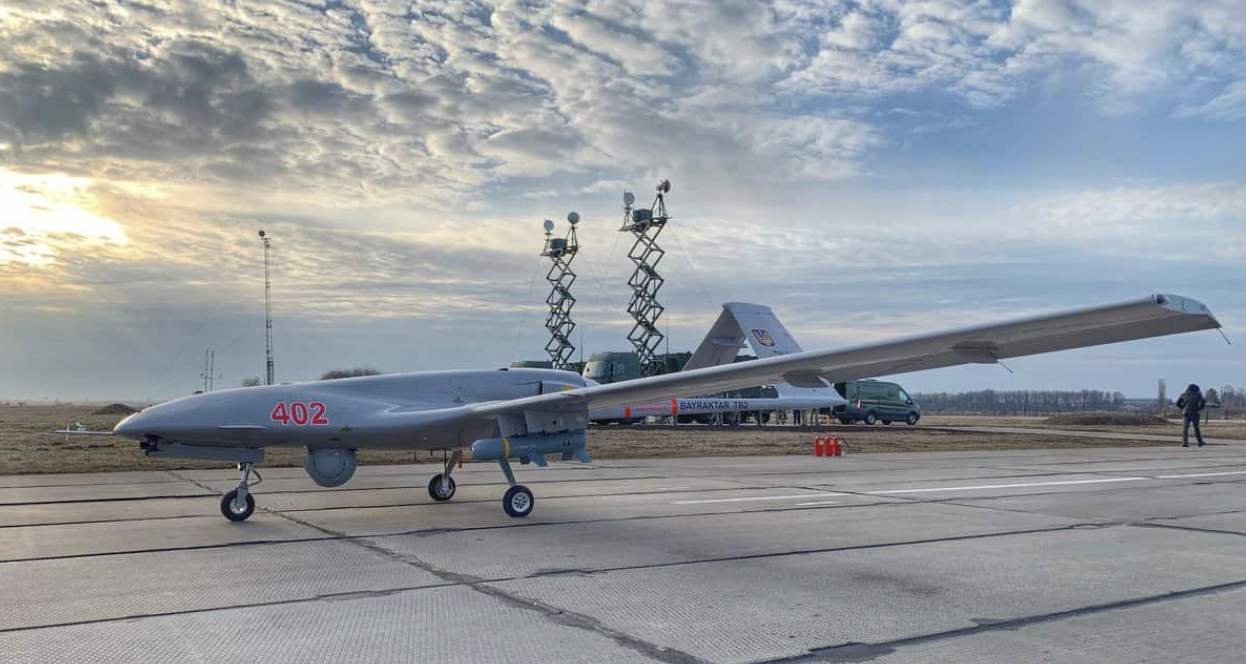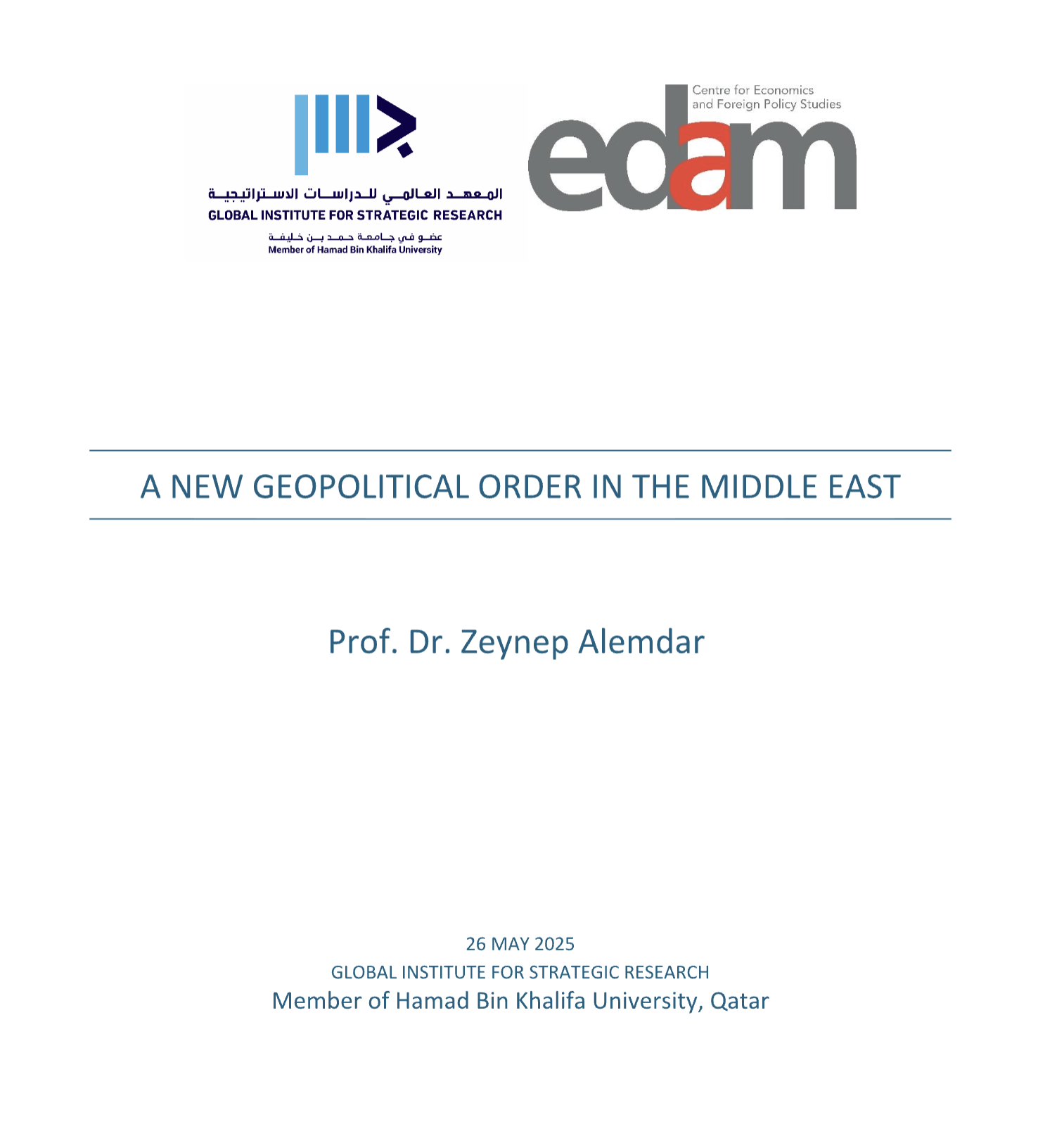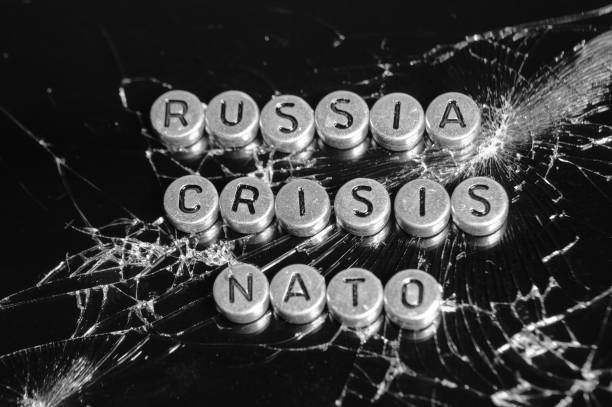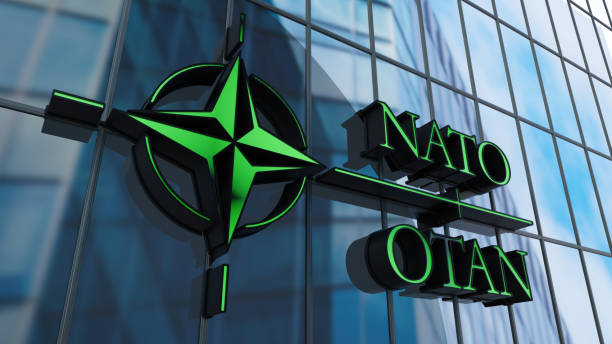
Can Turkish Drones Help Ukraine? A Military-Strategic Assessment*
*Originally published by the official British Army think tank, The Centre for Historical Analysis and Conflict Research.
The Second Karabakh War was bad news for Moscow. The Azerbaijani Armed Forces scored high kill-rates against the Armenian combat formations which were predominantly equipped with Soviet-Russian weaponry. Baku’s Turkish- and Israeli-made drones hunted down a broad array of targets, ranging from mobile air defences to heavy armour, and artillery pieces. Apart from their direct kinetic strike roles, unmanned systems augmented the Azerbaijani fire-support elements’ battlefield performances through ISTAR (intelligence, surveillance, target acquisition, and reconnaissance) missions.
After the war, notably, reputable Russian defence writings have focused on the unmanned aerial systems’ destructive role in the Armenian material losses. According to the Russian experts, interestingly, at the outset of the war, the high attrition came even without meaningful territorial change, which followed in the later stages of the conflict. President Aliyev of Azerbaijan underlined that the drones from Turkey and ‘other sources’ – referring to Israel – caused damage to the Armenian forces worth some $1 billion.
It is no secret that Russian policy publications have portrayed the introduction of Turkish arms, especially unmanned aerial systems (UAS), into the post-Soviet space as a menacing trend for Moscow. When it comes to Ukraine, the Russians can be even more alarmed as the Kremlin does not hide its geopolitical ambitions over its neighbour.
With the current Russian build-up giving ambiguous signals, perhaps revealing a textbook example of maskivorka, some analysts concluded that the Turkish drones in the Ukrainian arsenal can save the day for Kyiv. However, and unfortunately for the West and Ukraine, the Ukrainian military’s ‘dronisation’ is, at best, premature as it is now, and is unlikely to halt the Russian war machine if Putin decides to invade. Nevertheless, with a good defence, technological and doctrinal strategic partnership plan between Turkey and Ukraine, Kyiv can develop a robust drone warfare deterrent in the future.
Into the Natural Preys in the Drone Warfare Food-Chain
The Turkish way of drone warfare has proven to be a great success against asymmetric threats like ISIS and the PKK terrorist networks. Thus, in an ideal world with no Russian combined arms armies amassing along the Ukrainian frontiers, Baykar-manufactured Bayraktar TB-2s would make a real difference against Moscow-backed Donbass rebels. The Ukrainian security forces’ October 2021 drone strike in the east was alarming for the Russian leadership in this respect.
Furthermore, Turkish drone warfare solutions have also proven to be very effective against militaries lacking adequate sensor-fusion &situational awareness capabilities, along with counter-drone arms, to protect their principal land warfare units and weaponry. I prefer calling such militaries ‘the 20th century-minded armies’ reflecting their Cold War remnant operational art, lacking today’s modern battle-networks. The Syrian Arab Army’s cumulative losses during Turkey’s Spring Shield back in February 2020, and the Armenian combat formations’ collapse against the Azerbaijani military later that year, offer textbook case studies to depict ‘the 20th century-minded armies’.
The Ukrainian Setbacks: The Adversary, Arsenal, and CONOPS
The Ukrainian military in the face of Russia’s large-scale build-up is a different story altogether. The problem is not about the combat quality of Ukraine’s Turkish drones, but the lack of doctrinal and concepts of operations (CONOPS) work done by the Ukrainian General Staff, and an inadequate number and type of UAS in the Ukrainian military’s arsenal.
First, in the present setting, it is the Russians who enjoy the upper hand in the electromagnetic spectrum, a key pre-requisite of drone warfare. Moreover, in light of the lessons-learned from the 2018 drone attack targeting the Hmeiymim Air Base, Latakia, as well as the 2nd Karabakh War, the Russian short-range, mobile air defences, for example Tor-M2, have been receiving anti-drone upgrades, in addition to soft-kill options which are also spreading fast. Overall, when it comes to counter-drone capacity, Kyiv should not confuse the Russian military with the Armenian or Syrian fiascos.
Furthermore, it is not only about downing the drones. Like all fixed-wing aircraft, the Turkish-made Bayraktar TB-2s in the Ukrainian arsenal depend on runways and support facilities to sustain their combat missions. Open-source intelligence suggests that Kyiv flies these platforms in northern and southern sectors, along the Belarusian frontier, and over the Black Sea. At present, the Armed Forces of the Russian Federation have already deployed heavy fire-power, including army-level MLRS (i.e. BM-30 Smerch) and SS-26 Iskander ballistic missiles in the vicinity of those sectors. At the very outset of the conflict, the Russians will likely go for the facilities that will enable drone warfare operations.
Second, Ukraine’s problem is the lack of a viable drone warfare doctrine, augmenting network-centric warfare. Simply put, the Turkish way of drone warfare is centred on the systematic combination of drones as ISTAR assets, as well as battle-damage assessment platforms, giving a true boost to land-based fire-support weaponry, such as artillery pieces and multiple-launch rocket systems (MLRS). Another critical pillar of the Turkish drone warfare CONOPS is using unmanned aerial systems to suppress enemy air defence (SEAD) weapon systems. This tactic was very visible in the mobile SAM hunt during Turkey’s Operation Spring Shield, famed for the Syrian Arab Army’s Pantsir losses, as well as the 2nd Karabakh War, witnessing the Azerbaijani military’s Israeli- and Turkish-made drones pounding the Armenian mobile air defences. Besides, evidence suggests that Turkish defence planners have systematically used Aselsan-manufactured Koral electronic warfare systems to blind the Syrian sensors and defences.
The Azerbaijani Armed Forces have been able to digest all the above-mentioned drone warfare doctrine and CONOPS features thanks to the systematic integration with the Turkish military through non-stop drills, and the bilateral strategic partnership framework. The Armed Forces of Ukraine, however, have not had enough time and opportunity to build the same know-how.
Finally, as one would expect, Turkey fighting with Turkish drones and Ukraine fighting with Turkish drones would be two different campaigns. The Turkish security forces, including the Ministry of Defence and Ministry of Interior formations along with the intelligence services, have been unmanned aerial systems users for a long time. The Turkish military’s combat UAS arsenal is manifested with three-digit numbers. Both private (Baykar) and state-owned (Tusas, STM [the latter produces mini kamikaze drones with high-end AI algorithms]) manufacturers effectively arm the Turkish military with unmanned aerial solutions. These firms’ massive production lines can compensate for the downed drones. The Ukrainians however, with their limited arsenal, cannot easily bear the losses.
Another trouble for Kyiv is the limited amount of munitions. Turkey’s Roketsan produces smart, indigenous fire-power for the Turkish UAS, such as the MAM-L, with advanced guidance and a broad selection of warhead configurations, including armour-piercing, high-explosive blast fragmentation, and thermobaric solutions. Turkey does not certify foreign munitions for its robotic platforms and does not co-produce the drone armament with its exports clientele.
What Might Have Been?
In fact, Kyiv’s story with drones in a conventional fight with the Russians does not have to be that pessimistic. With some right steps, and if there is enough time, things could still go very positively. And, if Ukraine weathers the current storm, it can build a strong drone warfare deterrent via in-depth cooperation with Turkey.
Above all, Ukraine would need more numbers in its arsenal which would necessitate more than off-the-shelf procurement. President Erdogan and President Zelensky have recently penned a co-production deal for the Bayraktar TB-2s. In the near future, the Ukrainian drone arsenal will climb up to higher numbers depending on the production line’s efficiency.
As explained earlier, following the Azerbaijani experience, Kyiv’s second need is to develop a meaningful doctrinal stance and the right CONOPS for its robotic warfighting edge. In this respect, Ukrainian defence planners need to use drones in a networked fashion and integrate them with other weaponry, such as land-based fires and electronic warfare assets. One good framework to improve Ukraine’s drone-augmented network-centric warfare capabilities could be mimicking the Turkey – Pakistan – Azerbaijan trilateral drills, and introducing the Tur-Az-Ukr regular exercises.
Finally, next-generation Turkish solutions, in large numbers and used with the necessary CONOPS, would make a difference amidst the unfolding situation along Ukraine’s borders. Baykar-manufactured Akıncı & SOM cruise missile configuration looms large in this respect. This lethal platform & munitions combination enables deep-strike missions over 250km operational range against high-value enemy targets and military groupings behind the frontlines. From a military standpoint, the Armed Forces of Ukraine badly need such a capacity to hit the Russian forward assembly areas, initial breakthrough positions, and logistical lines in case of a deep invasion. Furthermore, Akıncı’s ability to operate under GPS-spoofed EW environments, along with dual-SATCOM / dual-LOS features, would provide additional measures against the Russian activity in the electromagnetic spectrum.
Another good solution for Ukraine would be Aksungur of Tusas, with an impressive 50-hours loitering-time and its interesting combat payload configuration of anti-submarine warfare and maritime patrol missions. Especially, given the Russian naval and amphibious build-up in the Black Sea, Aksungur would be a useful asset for the Ukrainian Navy. Integrating the Aksungur drones with Ukraine’s progressing Neptune anti-ship coastal missile program in the same command & control network can offer good options for the Ukrainian military planners.
All in all, Ukraine’s Turkey-made drone capacity, as it is, can make a difference against Russia-backed rebels in the east, but not against the Armed Forces of the Russian Federation with the current build-up. In the future, however, with the right systems and a meaningful doctrine, the Armed Forces of Ukraine could greatly benefit from the burgeoning defence cooperation with Turkey.









